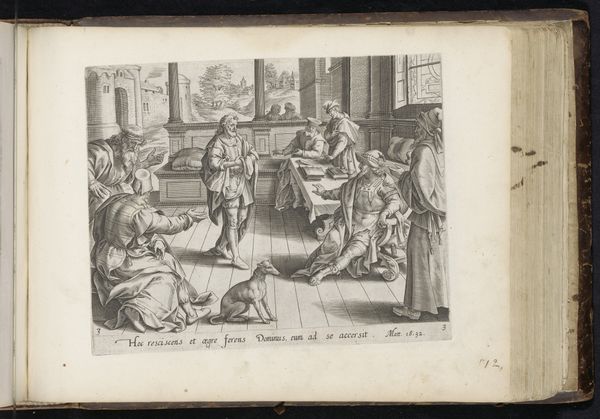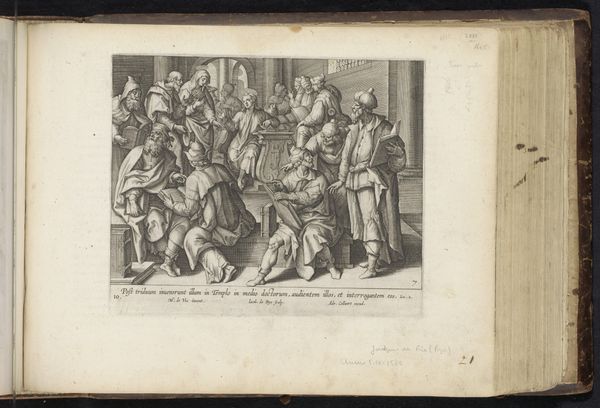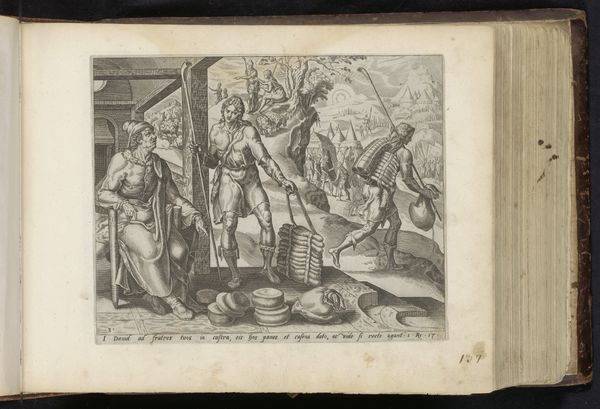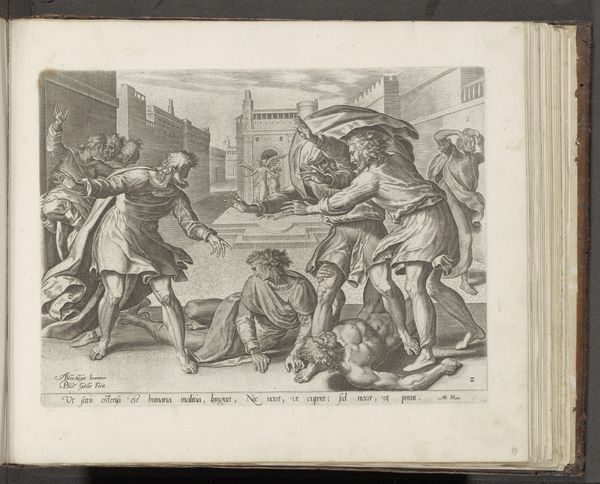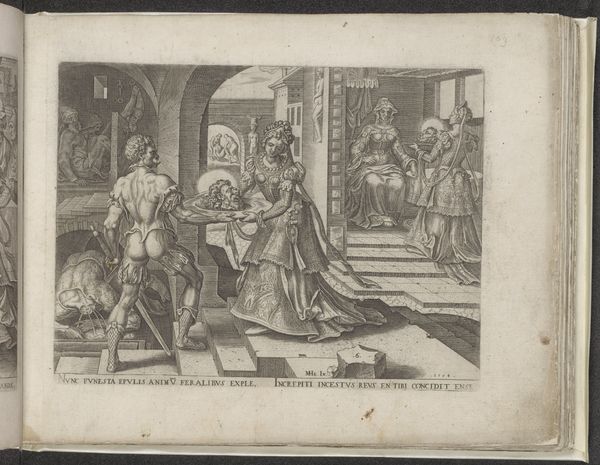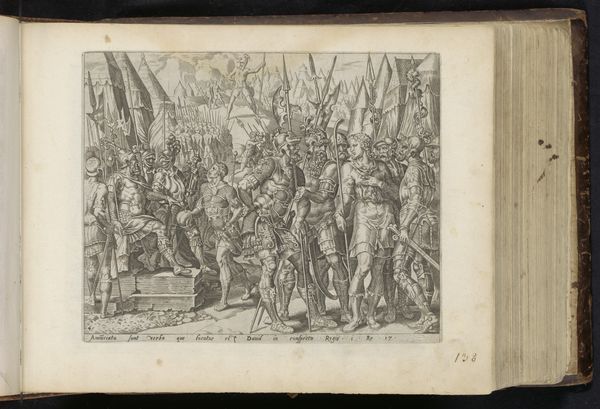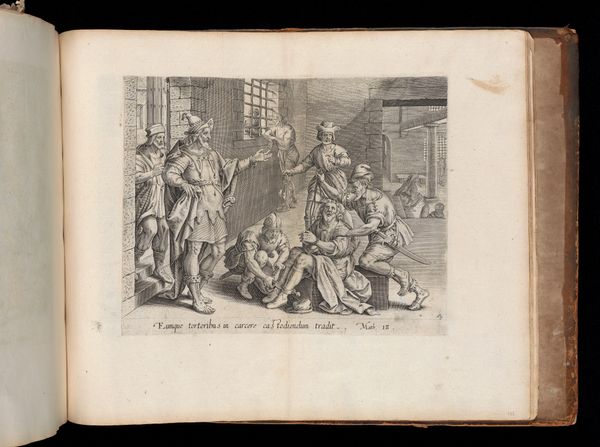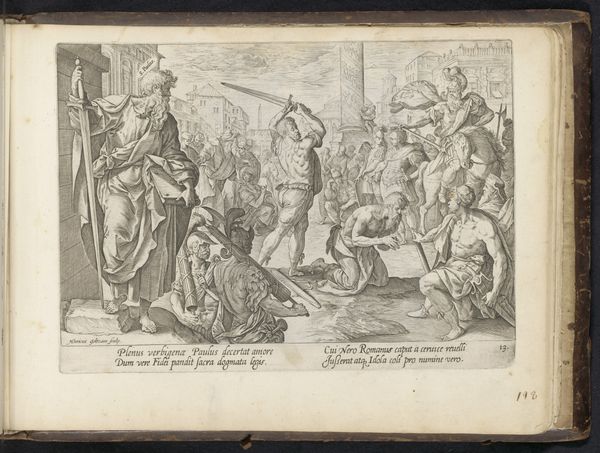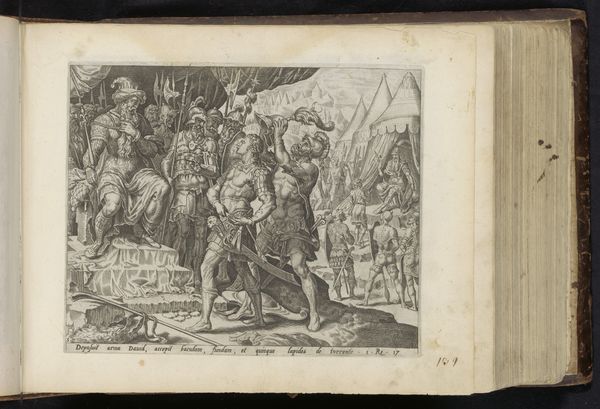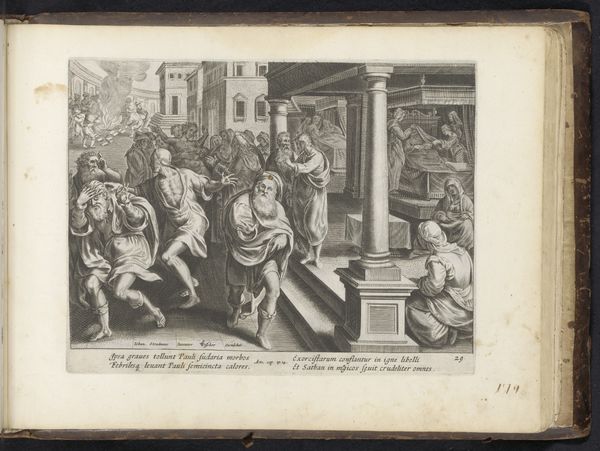
De onbarmhartige dienaar laat zijn schuldenaar gevangen zetten 1585 - 1646
0:00
0:00
print, engraving
#
medieval
#
narrative-art
#
baroque
# print
#
figuration
#
coloured pencil
#
line
#
genre-painting
#
history-painting
#
engraving
#
realism
Dimensions: height 198 mm, width 249 mm
Copyright: Rijks Museum: Open Domain
Editor: This engraving, "De onbarmhartige dienaar laat zijn schuldenaar gevangen zetten," dating from 1585-1646, appears to be from an anonymous artist and resides at the Rijksmuseum. The level of detail is really striking, almost photorealistic, given its age. I’m curious how societal attitudes of the time influence your perception of it. What kind of meaning do you pull from this scene, knowing what we do about that era? Curator: Considering the historical context, this image provides insights into social hierarchies and power dynamics prevalent at the time. Depicting an unforgiving servant imprisoning his debtor, the artwork likely reflects contemporary anxieties around debt, morality, and justice. How do you see the composition directing the viewer's eye, and what effect might that have had on a contemporary audience encountering this image? Editor: The guards with spears definitely stand out. And then there’s the clearly distressed man on his knees. All the lines seem to push your gaze towards him, but his position seems like it’s meant to also invoke submission. So, does this image say anything about justice then? Curator: Precisely. The imagery subtly critiques abuses of power within social and economic systems. These prints were often distributed widely. Do you think that would cause the authorities any problems back then? Editor: Possibly. People could be educated and, presumably, the rulers would not want any problems amongst those they were ruling! Now I notice there’s also writing on the artwork itself - this is a very interesting combination of medium and social commentary. Curator: Indeed. The incorporation of text, often biblical scripture as in this case, aimed to provide moral and theological grounding to the narrative. Its public accessibility made art and ideas of the time subject to constant negotiations with those in charge, be they theological, noble, or something else. Now I’m really interested in digging deeper into the life and times of print-makers. Editor: This has opened my eyes to how closely art can be intertwined with both political and societal concerns. I feel like I’ve learnt a lot today about understanding a piece beyond its aesthetic. Thanks.
Comments
No comments
Be the first to comment and join the conversation on the ultimate creative platform.

